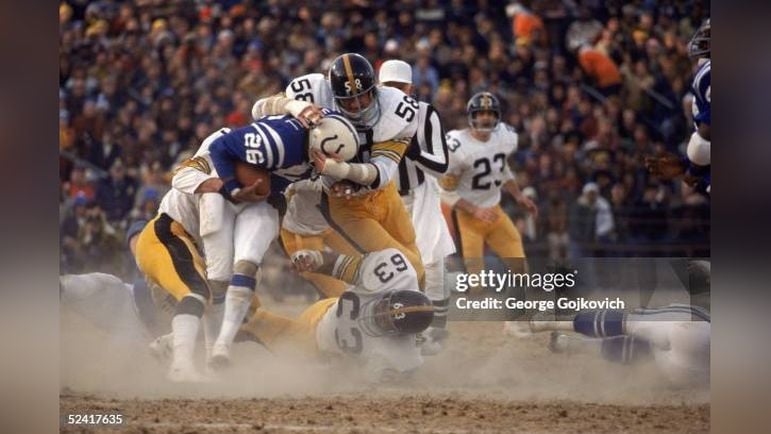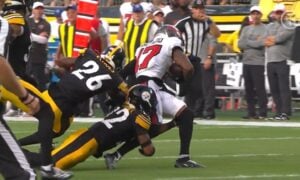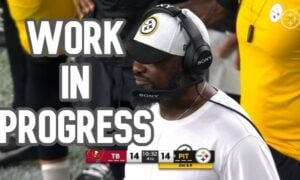The 1976 Pittsburgh Steelers’ defense is a historic unit with results unlikely to be replicated. Despite the video-game numbers posted, a new study argues it isn’t the No. 1 defense in NFL history. In fact, it isn’t even in the top five.
Analyst Aaron Schatz used Defense-Adjusted Value Over Average (DVOA), an advanced metric designed to judge team performance based on the era and opponents. The ’76 Steelers are rated high but not as high as fans would think. The group ranks 7th all-time in DVOA with a minus-28 percent overall figure (like golf, lower is better for this metric).
The group loses out to obvious contenders like the 2002 Tampa Bay Buccaneers (third at minus-32.1 percent) and the 1985 Chicago Bears (fifth at minus-29.5 percent), but lesser-known units like the 1969 Minnesota Vikings (second at minus-34.4 percent) and even the 2018 Bears (sixth at minus-28.1 percent).
A slower start to the season may have dinged the Steelers’ ranking. Before becoming historic, the unit was mortal. Pittsburgh allowed 30-plus points in two of its first three games as part of the team’s 1-4 start to the year. Once QB Terry Bradshaw was knocked out by Cleveland Brown DL Turkey Joe Jones, leaving rookie Mike Kruczek as the only quarterback rostered, the defensive light switch flipped. From there, Pittsburgh allowed only 28 total points over its final nine regular-season games. The defense pitched five shutouts and forced 28 turnovers, a streak that will never be matched in a modern-day NFL.
Defensive dominance continued in the Divisional Round of the playoffs, holding the Baltimore Colts’ No. 1 scoring offense to 14 points. Things fell apart in the AFC Championship Game against the Oakland Raiders. With a depleted roster without RBs Franco Harris or Rocky Bleier, the Steelers fell 24-7.
As a whole, the 1976 Steelers finished as the eighth-best team in our offseason list, ranking all 92 seasons. Calling it the greatest “what if” team, even an average offense with better health could’ve allowed Pittsburgh to win another Super Bowl, making the dynasty even more special.
Taking the No. 1 spot on Schatz’s list was the 1991 Philadelphia Eagles with a DVOA of minus-36.7 percent. Despite that unit ranking fifth in points allowed that year, allowing 20-plus points in six of 16 games, the group finished No. 1 in yards allowed and turnovers created. It’s a surprising inclusion for top billing, and most historians would disagree with the metric.
Pittsburgh’s 2008 defense finished close behind the 1976 version. That unit was tenth at minus-27.1 percent. Two more groups round out the Top 20: 1974 (17th, minus-25.1 percent) and 1973 (18th, minus-24.9 percent).
As upsetting as the list might make Steelers fans, they weren’t the only unit with debatable outcomes. The vaunted 2000 Baltimore Ravens, widely considered one of the great defenses in NFL history, failed to even crack the top-20. Schatz notes the team’s run defense was historic, but the pass defense finished far from it. By DVOA, the 2008 Ravens are the franchise’s best unit, a group Pittsburgh bested in that year’s title game en route to its sixth Super Bowl.








